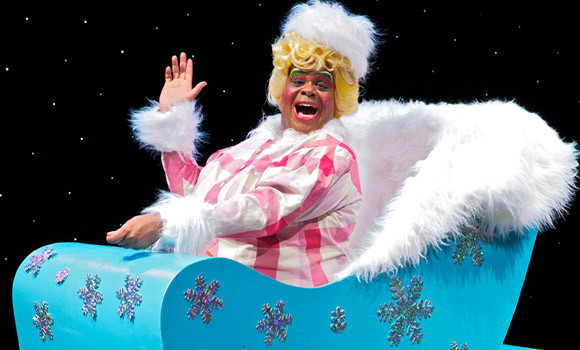What is pantomime? A guide to this most British of festive institutions
The pantomime genre is a strange one, to say the least, especially for those born outside the UK. Here, in an edited extract from ”Getting Directions” by Russ Hope, is an introduction

There is an old joke. A veteran actor takes a job in pantomime. One night, as he straps on the back-end of a panto horse, he wonders aloud what happened to his career. A wag replies: "It’s behind you!"
Towards the end of the 1970s, the subsidised theatre all but stopped making pantomimes. For over 100 years, pantomimes, with their bawdy dames, slop scenes and raucous singalongs, were as much a part of Christmas as turkey dinners and family arguments. But today, they are more likely to be seen in village halls and in thousand-seat commercial playhouses, and little in between.
A love of pantomime is a matter of taste or, depending on who you talk to, lack of taste. Disregard for the form runs so high in some circles that the word ‘panto’ itself has changed its meaning, from a description of a particluar form of theatre, knowable by strict, if baggy, collections of narrative rules and aesthetic principles, to a verb to describe all that might be lazy in a production. An audience might say of an actor who pulled one too many faces that he ‘pantoed’ his way through a scene.
Ask ‘What is theatre?’ and we’ll be here all day. Even then, we may not agree on a definition. But ask ‘What is pantomime?’ and the answer is a little easier. We know a pantomime by certain structural and tonal rules, cobbled together over a hundred years, and without which we may have a piece of theatre, but it won’t be the pantomime version of the story.

To be the 'panto' version of the story, a production must:
• Be set in a romanticised vision of the local community, celebrated in song by a chorus of townspeople.
• See love triumph and villains redeemed.
• Have its villain enter from stage-left, and its hero from stage-right.
• Feature original songs and parodies of the popular songs of the day, and a singalong with lyrics printed on an enormous song sheet.
• Contain slapstick.
• Revel in double entendre.
• Challenge the audience into call and response with the characters.
• Feature a dame, which is a man in matronly drag who makes risqué jokes and throws sweets into the audience.
• Allow the actors to acknowledge the audience’s presence whilst remaining in danger within the story.
• At some point, bring a child from the audience on stage.
There is a tradition that scenes alternate between those played in front of brightly coloured show-cloths, and those played among elaborate sets that use the full expanse of the stage. Decided upon before the days of flying and automated scenery, this tradition is no longer necessary, but as it can create a hurtling momentum, it is often retained. However the convention that the lead boy is played by a female actor is now often dispensed with.
But, despite ongoing changes and modernisations of the genre, one thing's for certain, pantomime is in no danger of someone shouting "It’s behind you!" anytime soon!
This is an edited extract from Getting Directions: A Fly-on-the-Wall Guide for Emerging Theatre Directors by Russ Hope, published by Nick Hern Books.













